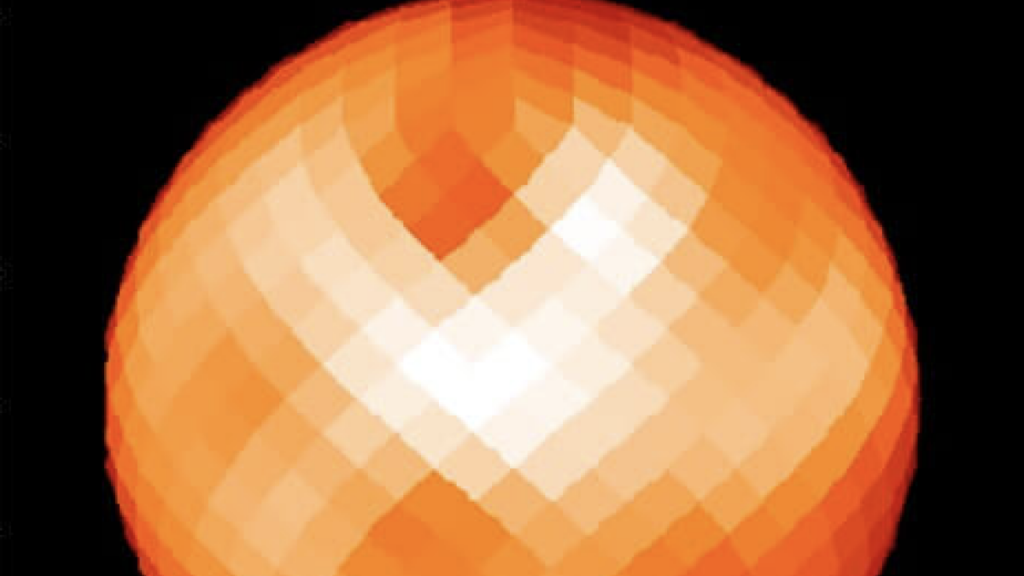
New image shows the North Star is changing. And it has spots. (Image Credit: Mashable)
Except this star is actually volatile. It’s pulsating as it constantly grows and shrinks. And a new unprecedented image of the hot ball of gas reveals it’s covered in large spots.
In research published by The Astrophysical Journal, researchers used an array of telescopes in California’s San Gabriel Mountains — the Center for High Angular Resolution Astronomy (CHARA) Array — to capture an image of the famous star, also known as Polaris. The star is located almost directly above the North Pole and in line with Earth‘s rotational axis, so it appears at a constant point in the sky (and serves as a navigational reference).
Yet Polaris is a “cepheid variable” star, meaning its brightness fluctuates dramatically. The array’s view of the North Star — the first look at the surface of a cepheid variable — showed its surface is actually covered in spots.
“The CHARA images revealed large bright and dark spots on the surface of Polaris that changed over time,” Gail Schaefer, director of the CHARA Array, which is operated by Georgia State University, said in a statement.
The view below shows these newly observed spots. Capturing such an image from deep space is quite a feat. The North Star appears 600,000 times smaller in the sky than a full moon.

Credit: CHARA Array / Georgia State University

Credit: NASA / Preston Dyches
The new imagery also revealed that the North star, which is part of a three-star system, is five times more massive than our medium-sized sun, and 46 times wider.
To capture this stellar view, six spaced-out telescopes atop the lofty array captured light from Polaris. In effect, this created a 330-meter (1,082-foot) telescope, which is needed to capture such extremely faint light. This light was ultimately fed to an instrument called the MIRC-X camera — which simultaneously combines the light from all six telescopes.
Polaris’ behavior still largely remains a mystery. Solar scientists know it grows and shrinks over four-day cycles, but its spotted appearance may be tied to 120-day cycles. “We plan to continue imaging Polaris in the future,” astronomer John Monnier, one of the study’s coauthors, also said in a statement. “We hope to better understand the mechanism that generates the spots on the surface of Polaris.”
Today, Polaris might be a dominant fixture in the night sky. But it won’t always be our North Star.
Earth wobbles on its axis, like a spinning top. “This causes the celestial pole to wander in a slow circle over the eons, sweeping past different stars,” NASA explains. In some 12,000 years, the star Vega will be our North Star, replacing the spotted curiosity, Polaris.
Topics
NASA





